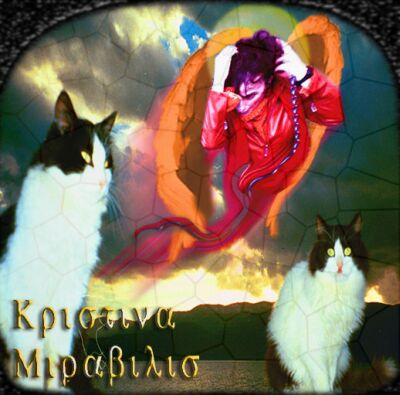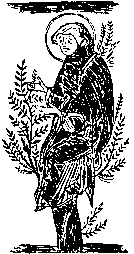From: Butler's
Lives of the Saints
(Christina of Liege, Christina Mirabilis)
1150 - 1224
July 24 Christina the Astonishing, Virgin (A.D. 1224)
Christina was born at Brusthem in the diocese of Liege, in 1150, and at
the age of fifteen was left an orphan, with two elder sisters. When she
was about twenty-two Christina had a seizure, was assumed to be dead,and
in due course was carried in an open coffin to the church, where a Mass
of requiem was begun. Suddenly, after the _Agnus Dei_, Christina sat
up, soared to the beams of the roof, and there perched herself. Everyone
fled from the church except her elder sister, who, though thoroughly
frightened, gave a good example of recollection to the others by
stopping till the end of Mass. The priest then made Christina come down (it was
said that she had taken refuge up there because she could not bear the
smell of sinful human bodies). She averred that she had actually been
dead; that she had gone down to Hell and there recognized many friends,
and to Purgatory, where she had seem more friends, and then to Heaven.
This was only the beginning of a series of hardly less incredible
occurrences. Christina fled into remote places, climbed trees and
towers and rocks, and crawled into ovens, to escape from the smell of humans.
She would handle fire with impunity and, in the coldest weather, dash
into the river, or into a mill-race and be carried unharmed under the
wheel. She prayed balancing herself on the top of a hurdle or curled up
on the ground in such a way that she looked like a ball. Not
unnaturally, everyone thought she was mad or 'full of devils,' and
attempts were made to confine her, but she always broke loose.
Eventually she was caught by a man who had to give her a violent blow on
the leg to do it, and it was thought her leg was broken. She was
therefore taken to the house of a surgeon in Liege, who put splints on
the limb and chained her to a pillar for safety. She escaped in the
nights. On one occasion when a priest, not knowing her and frightened
by her appearance, had refused to give her communion, she rushed wildly
through the streets, jumped into the Meuse, and swam away. She lived by
begging, dressed in rags, and behaved in a terrifying manner.
The last years of her life Christina passed in the convent of St.
Catherine at Saint-Trond, and there she died at the age ofseventy-four.
Even while she lived there some who regarded her with great respect.
Louis, Count of Looz, treated her as a friend, welcoming her to his
castle, accepting her rebukes, and on his deathbed insisting on
manifesting his conscience to her. Blessed Mary of Oignies had regard
for her, the prioress of St Catherine's praised her obedience, and St
Lutgardis sought her advice. |

